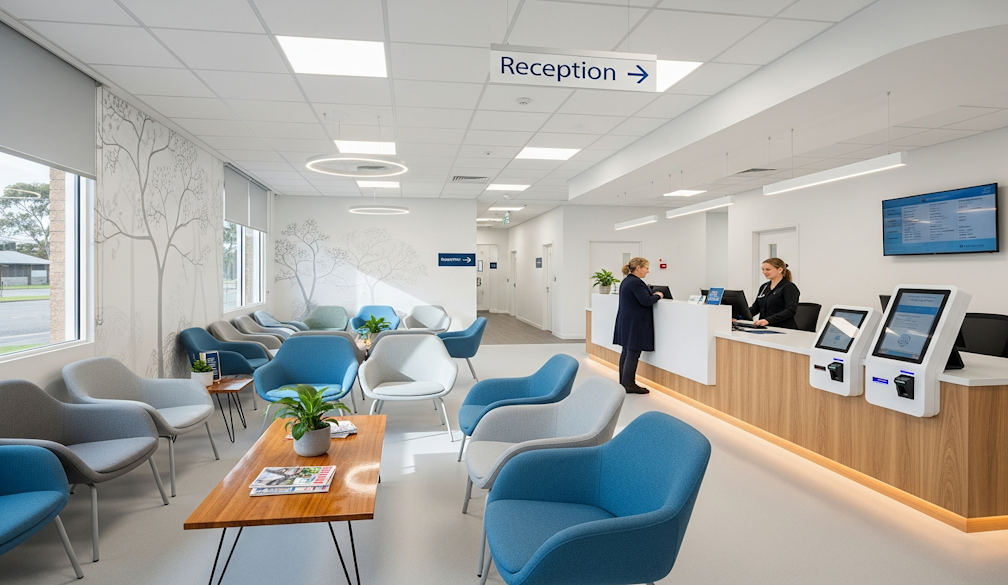Medical Fitout Melbourne: Designing Modern Healthcare Spaces for Efficiency and Comfort

In the healthcare industry, the environment of a medical facility is just as important as the care being provided. A well-planned medical fitout Melbourne project transforms an ordinary space into a professional, functional, and welcoming medical centre that meets both patient and practitioner needs. With growing demand for high-quality healthcare environments, Melbourne medical professionals are investing in customised fitouts that combine modern design, operational efficiency, and compliance with industry standards.
A medical fitout goes beyond simple construction — it’s about understanding how healthcare spaces operate. Every consultation room, treatment area, and waiting space must be designed to support patient flow, infection control, privacy, and comfort. From general practices and dental clinics to specialist centres and allied health facilities, each fitout must be tailored to the type of medical service being delivered.
Why a Professional Medical Fitout Matters
The success of any healthcare practice relies heavily on its physical space. An efficient, hygienic, and thoughtfully designed clinic improves patient experience, enhances staff productivity, and ensures compliance with healthcare regulations. On the other hand, a poorly designed space can cause workflow inefficiencies, safety concerns, and discomfort for patients.
A professional medical fitout ensures the facility not only looks appealing but also functions seamlessly. It provides a practical layout that facilitates smooth movement, clear communication, and easy access to equipment and utilities. From patient check-in at reception to consultation and treatment, each part of the clinic must be designed to support daily operations.
Additionally, healthcare fitouts in Melbourne must comply with strict standards set by governing bodies such as the Department of Health and Australian Building Codes. This includes infection control, accessibility, ventilation, and waste management. Working with experienced medical fitout specialists ensures these critical details are managed correctly from concept to completion.
Key Considerations in a Medical Fitout
Designing a medical clinic requires balancing multiple priorities — hygiene, efficiency, privacy, and comfort. Every aspect of the design must serve a purpose, from the placement of hand basins and storage cabinets to the materials used on floors and walls.
A crucial factor is patient flow. Clinics must be designed so that patients can move through the space smoothly, from arrival to departure. This means ensuring reception areas are welcoming, consultation rooms are private, and treatment zones are easily accessible yet discreet.
Lighting also plays a significant role. Natural light helps create a calming environment, while focused task lighting is essential for medical examinations and procedures. Air quality and temperature control are equally important, as they contribute to both staff performance and patient comfort.
Acoustic design must not be overlooked. Privacy is a legal and ethical requirement in healthcare, so soundproofing consultation and treatment rooms helps maintain confidentiality and compliance with health information standards.
Hygienic and Durable Materials
Infection control is one of the most critical considerations in any medical fitout Melbourne project. Materials used must be easy to clean, non-porous, and resistant to bacteria. Seamless vinyl flooring, stainless steel benches, and medical-grade cabinetry are popular choices for maintaining cleanliness and durability.
Paints, finishes, and adhesives must meet low-VOC (volatile organic compound) standards to ensure good indoor air quality. Additionally, the design should allow for easy cleaning, with minimal joins and corners where dirt or pathogens can accumulate.
Choosing the right materials also enhances the lifespan of the fitout. Medical facilities experience high traffic and frequent cleaning, so durability is key to minimising maintenance costs and downtime.
Patient-Centred Design
Modern medical fitouts focus on patient comfort and wellbeing. The design and atmosphere of a healthcare space can significantly influence a patient’s perception of care. Soft lighting, soothing colours, comfortable seating, and calming décor create a welcoming environment that helps reduce anxiety.
For family clinics or paediatric centres, incorporating playful design elements or child-friendly zones can make visits less intimidating for younger patients. Accessibility is also essential, ensuring that people with disabilities can navigate the space safely and comfortably.
Wayfinding design — including clear signage and logical layout — ensures patients can find their way around the facility without confusion. These subtle design elements collectively improve patient satisfaction and trust in the clinic.
Technology Integration in Modern Clinics
Technology has become a cornerstone of healthcare delivery, and modern medical fitouts are designed to accommodate digital systems and smart infrastructure. This includes integrating telehealth setups, electronic health record systems, and digital booking kiosks.
Data cabling, power outlets, and network connectivity must be planned from the outset to avoid future complications. Many Melbourne clinics now install soundproof telehealth rooms, allowing practitioners to conduct confidential online consultations in a quiet, private setting.
Smart lighting, automated air conditioning, and energy-efficient systems also play an increasing role in modern fitouts, helping clinics reduce running costs while improving operational control.
Sustainability and Energy Efficiency
Sustainability has become a growing priority across all sectors, including healthcare. Environmentally conscious medical fitouts in Melbourne often feature energy-efficient lighting, water-saving fixtures, and eco-friendly materials. Not only do these features reduce operational costs, but they also align with the values of patients and communities that prioritise environmental responsibility.
Incorporating natural light and ventilation wherever possible contributes to a healthier atmosphere for both patients and staff. Sustainable design also improves long-term value, as energy-efficient buildings typically attract higher tenant satisfaction and lower maintenance costs.
Conclusion
A well-designed medical fitout Melbourne project is far more than a construction exercise — it’s an investment in patient care, staff productivity, and long-term success. The best fitouts blend practicality with aesthetics, creating spaces that are hygienic, efficient, and welcoming.
By working with experienced professionals who understand the specific demands of healthcare design, Melbourne medical practices can create facilities that comply with regulations, meet operational needs, and reflect a commitment to quality care.













